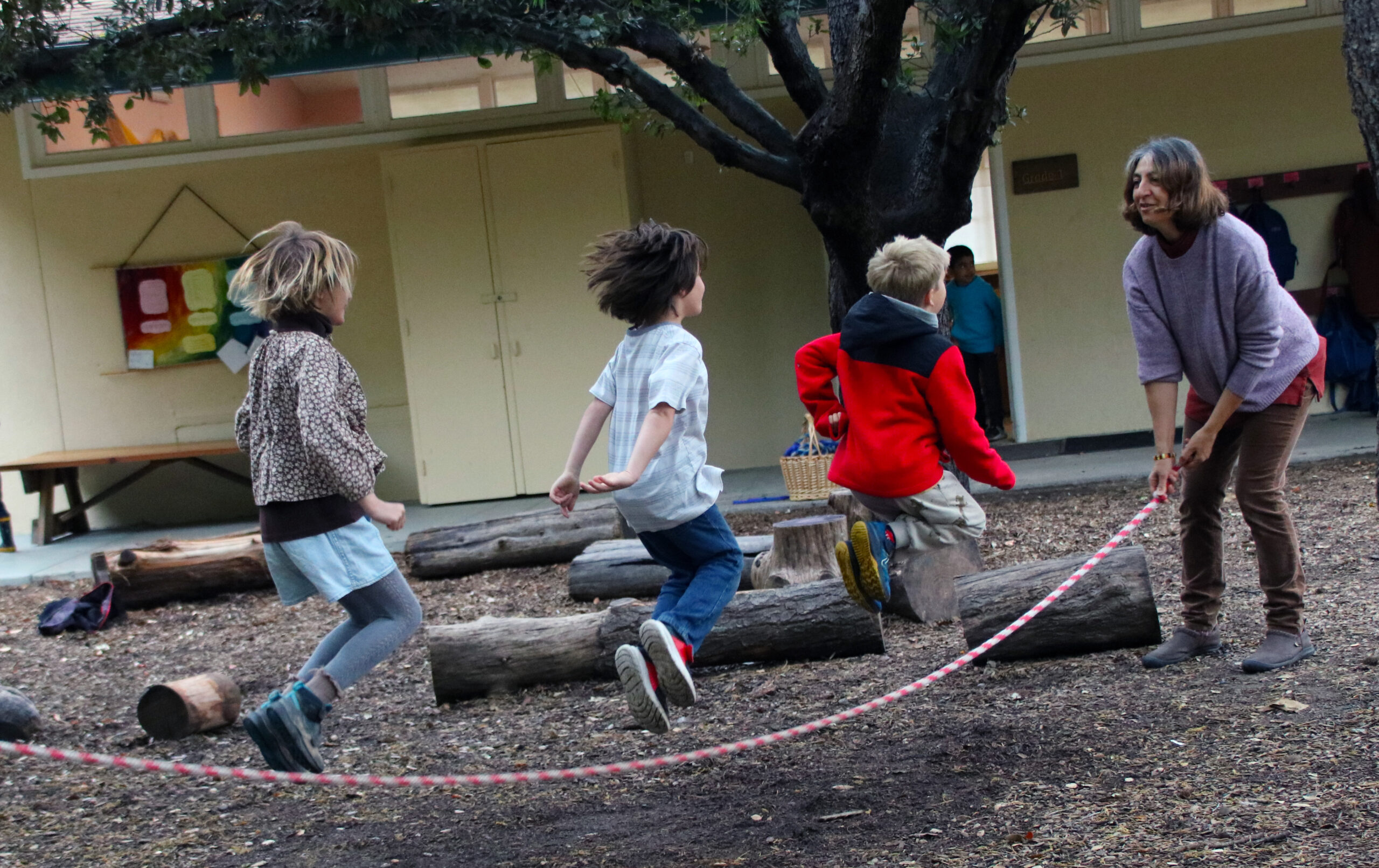It's Admissions Season!
Register for a tour or inquire to learn more about WSP’s transformative preschool-12th education.

Waldorf education’s approach to teaching students to read is a carefully structured method that aligns with children’s developmental stages and brain readiness. Contrary to popular belief, Waldorf schools do not actually delay reading instruction. Instead, we lay a strong foundation for literacy from the earliest years, giving children the time they need to properly develop the skills needed to grow into active and engaged readers and writers.
Building the Foundation
In preschool and kindergarten, our teachers focus on building vocabulary and understanding of spoken grammar. This is done through rich storytelling, puppet shows, and dramatic play. For instance, children might learn complex words such as “horrendous” or “precipice” through engaging stories. Teachers use puppet shows to clarify vocabulary and grammar concepts, especially for children who might be confused. Classrooms feature books with complex stories and beautiful imagery and art for children to explore.
Contrast this to a kindergarten classroom focused on early reading instruction. Of necessity, the teacher must dramatically simplify the grammar and vocabulary used in the classroom and in classroom materials, such as books. Instead of hearing stories with words like “incidental,” programs that push early reading instruction use books with sentences such as “The dog sees the cat.”
In our kindergartens, teachers gauge comprehension while introducing complex language structures by having children act out or retell the story in their own words. For example, children might encounter the use of passive voice in stories such as “The sun was lassoed by Maui.” By acting these out, children internalize these grammatical structures naturally. These methods help the children to develop a love of stories.
 This early focus on rich language and comprehension lays the groundwork for later reading success (Shanahan and Lonigan). When children eventually encounter complex texts with large words and varied sentence structures, they’re already familiar with these concepts, making comprehension easier.
This early focus on rich language and comprehension lays the groundwork for later reading success (Shanahan and Lonigan). When children eventually encounter complex texts with large words and varied sentence structures, they’re already familiar with these concepts, making comprehension easier.
The Role of Movement in Literacy Development
Traditional childhood activities like skipping and jumping rope play a crucial role in cognitive development, including the skills necessary for reading. From an evolutionary standpoint, reading is a relatively recent human skill. Our brains lack specific circuitry for reading, instead relying on neural pathways developed through movement and hands-on experiences to support this complex cognitive task.
As modern lifestyles increasingly favor sedentary entertainment, there’s growing concern about the impact on children’s cognitive development and reading readiness (Carson et al., 2015). Without physical activities that naturally promote bilateral coordination and neural integration, children may miss out on building essential brain connections needed for complex tasks like reading.
Waldorf education addresses this challenge by intentionally incorporating movement and hands-on experiences into the curriculum. This approach ensures that children develop both the physical and cognitive skills necessary for successful literacy acquisition. By prioritizing these activities, Waldorf schools support holistic development, preparing children not just to read, but to thrive in all areas of learning.
You might notice our kindergarten children skipping around the field in the mornings. While this also provides excellent exercise, it serves a much deeper purpose. These seemingly simple activities are laying the neural groundwork for future academic success, including reading proficiency. In essence, Waldorf education recognizes that the path to strong literacy skills begins long before a child picks up their first book.
Reading Instruction and Brain Development
Waldorf education recognizes that most children’s brains are developmentally prepared for reading instruction around ages 6-7, coinciding with the maturation of neural connections between brain hemispheres. This is why formal reading mechanics (like “c-a-t spells cat”) typically begin in first grade. If children are exposed to these mechanics before this developmental stage, they often rely heavily on picture cues to guess words, which can lead to significant challenges when illustrations are removed from texts at a later time around third grade.
Assessing Reading Readiness
To ensure a solid foundation, WSP conducts thorough first-grade readiness assessments and screenings. These include observing whether children can cross their midline in bilateral movements, indicating connected brain hemispheres. Interestingly, screeners will purposefully place writing utensils in specific places throughout the assessment to see if students are crossing the midline and to determine which hand is dominant. These observations are similar to those tracked in pediatric occupational therapy, highlighting the holistic approach Waldorf education takes towards child development.
The Holistic Path to Literacy
Our approach, incorporating movement and hands-on learning, aligns with this understanding of human cognition. By focusing on physical and linguistic development in the early years, we aim to create strong, confident readers who not only can decode words but also deeply comprehend and enjoy what they read. This approach stands in contrast to most modern educational methods that prioritize “more and sooner” when it comes to literacy, as if in a never-ending competition. While society often associates earlier reading with better long-term outcomes, Waldorf educators argue that the focus should be on the end result. After all, as they point out, no one in a job interview asks, “When did you learn how to read?” Instead, Waldorf education looks at the desired outcome and works backwards, ensuring a solid foundation for lifelong literacy which can lead students to a joy of reading and writing.
References